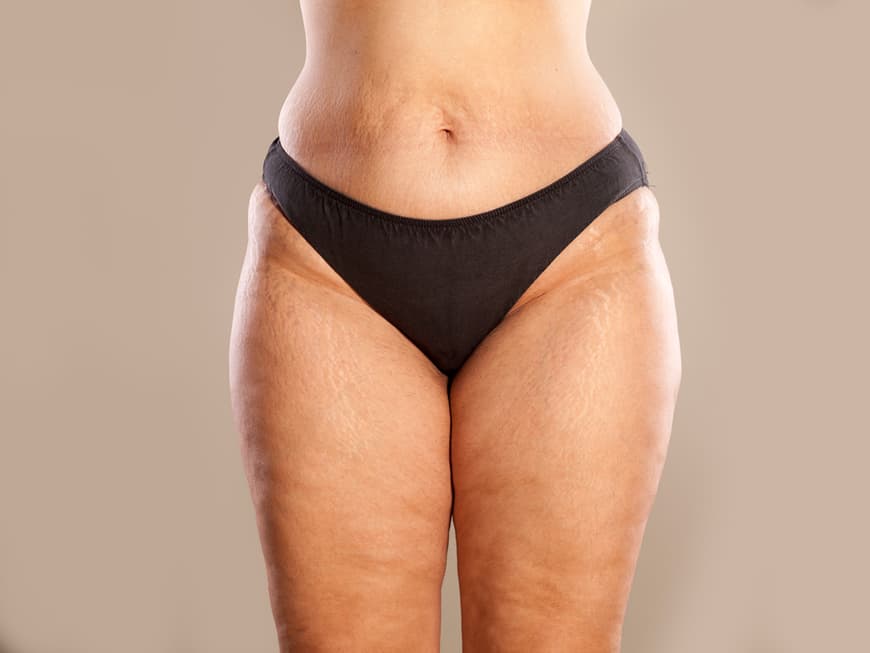
What is lipoedema?
The term lipoedema is made up of the ancient Greek words lip for "fat" and oedema for "swelling". In colloquial language, it is often referred to as "saddlebags syndrome" due to the typical deformation of the buttocks and hips. Almost exclusively women are affected by the diagnosis of lipoedema. Probably as a result of genetic predisposition, weight gain or hormonal changes, there is an increased occurrence of fatty tissue on the thighs and hips. As the disease progresses, the forearms, neck and lower legs can also be affected. The cause is the increased occurrence of pathologically altered fat cells, but not the consequences of being overweight. Those affected often suffer from
- Pain on pressure and touch
- Dents and soft, lumpy skin
- symmetrical swellings
- a tendency to spider veins and bruising
- Increased swelling in the second half of the day
Women are particularly frequently affected after pregnancy, during the menopause or after puberty. The first indication of lipoedema is diet resistance. If, for example, your legs are affected by symmetrical deformations that do not disappear even with exercise and diet, you may be diagnosed with lipoedema.
The treatment of lipoedema
Different approaches are chosen depending on the progress of the disease. First of all, once lipoedema has been diagnosed, the stage of the disease is determined in order to choose an appropriate form of treatment. This is divided into stages I, II and III, with stage I marking the beginning of the disease. The skin is still smooth and the fat is fine-knotted. In stage II, however, the fat structure is coarser and the skin is uneven. In the last stage, the skin is finally very uneven and hard and protruding fat flaps have formed. The most important therapy is compression therapy. It can stop the development of the oedema. A reduction in your lipoedema is also possible. In stages I and II, compression is primarily achieved using special stockings. You should wear these at least three days a week - preferably every day and also when exercising.
If you are already in stage III of the disease, complex physical decongestive therapy (CDT) can be used. This consists of manual lymphatic drainage and a subsequent compression bandage. The drainage serves to promote the drainage of fluid from the tissue. Following this treatment, you will again wear compression stockings to maintain the results of the treatment. A third treatment method is liposuction, also known colloquially as liposuction. However, you should always consult your doctor before taking this step. This can lead to consequential damage. Possible consequences include the formation of "dents" or damage to the lymph vessels, which can even lead to lymphoedema.
What else you should look out for
The diagnosis of lipoedema is recognized by health insurance companies, but surgical treatment methods are not supported. At a very early stage of the disease, exercise and diet can also help. If you suspect that you are affected, you should consult your doctor or a trained specialist to find out whether you need to be diagnosed with lipoedema. An attentive doctor will usually examine you carefully and be able to rule out other conditions as possible causes. Exercise and a healthy diet can not only prevent lipoedema, they can also help you to deal with the consequences of the condition and protect your quality of life.
You may also be interested in this:
